First in a series of highlights from Medical Innovation Summit
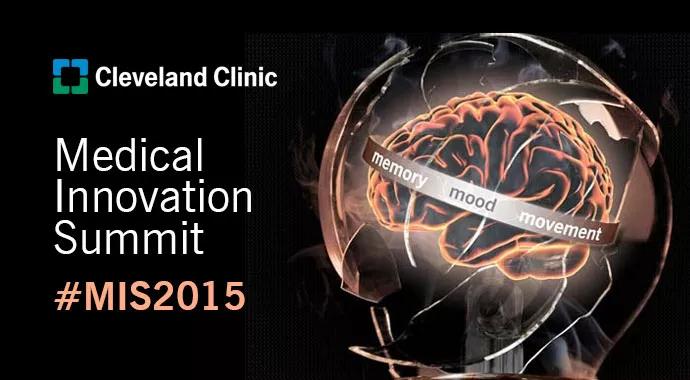
The term “medical innovation” may conjure images of devices and pharmaceuticals, but today it’s just as much about pioneering improved methods of healthcare delivery as it is about developing new therapies. That was a recurring theme at Cleveland Clinic’s 2015 Medical Innovation Summit, a four-day forum held in Cleveland in October for healthcare thought leaders from around the world. This year’s gathering — entitled “Memory. Mood. Movement.” — focused on advances in the neurosciences.
Cleveland Clinic is a non-profit academic medical center. Advertising on our site helps support our mission. We do not endorse non-Cleveland Clinic products or services. Policy
Andre Machado, MD, PhD, the newly appointed Chairman of Cleveland Clinic’s Neurological Institute, launched the summit’s plenary sessions with a discussion of his vision for neurological innovation. Dr. Machado has been a neurosurgeon at Cleveland Clinic since 2006, most recently serving as Director of the Center for Neurological Restoration. He has received numerous patents and earned international acclaim for his work in deep brain stimulation and neuromodulation. An active laboratory researcher and leader of several clinical trials, Dr. Machado was a recipient of the 2009 NIH Director’s New Innovator Award to support his ongoing research in deep brain stimulation for thalamic pain syndrome.
Below are highlights from Dr. Machado’s discussion, which took the form of a Q&A with Cleveland Clinic Chief of Staff Brian Donley, MD. This article is the first in a series of ConsultQD posts that will recap the summit’s most noteworthy sessions on the present and future of neuroscience innovation.
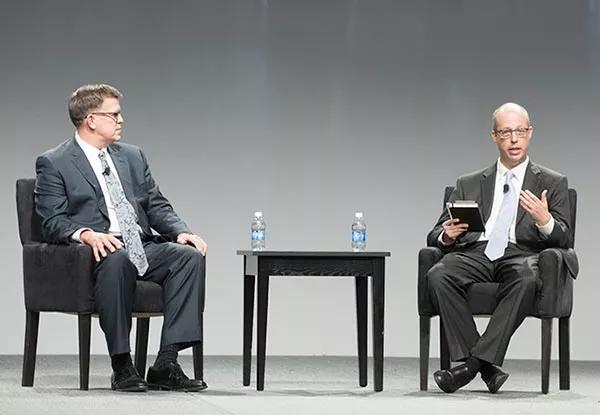
Dr. Brian Donley (left) and Dr. Andre Machado during the Q&A that launched the plenary sessions at Cleveland Clinic’s 13th Annual Medical Innovation Summit in October 2015.
Dr. Donley: What are the challenges of bringing medical innovations from bench to bedside?
Dr. Machado: There are plenty of innovative ideas out there, but bringing them to proof of concept and then to a first-in-man application is extraordinarily complex. Researchers don’t bring a therapy from bench to bedside by themselves. It requires very large, multidisciplinary teams, including entrepreneurial leaders and investment groups. If you work in a silo or in an institution that does not encourage interdisciplinary collaboration, the odds are very small of achieving an innovative goal or bringing a new therapy to patients.
Innovation today is also about finding new ways to deliver care for common disorders, such as Alzheimer disease, stroke and Parkinson disease. Neurological disorders like these are the leading cause of long-term disability in the industrialized world.
Dr. Donley: How is care delivery being transformed in Cleveland Clinic’s Neurological Institute?
Dr. Machado: In order to address the enormous burden of Parkinson disease, stroke and Alzheimer disease, we need to advance in three fundamental areas:
New technologies will enable this care transformation. For example, Jay Alberts, PhD, Director of Cleveland Clinic’s Concussion Center and Vice Chair for Health Technology Enablement in the Neurological Institute, is turning off-the-shelf technologies and wearables into transformative products that will help us not only care for individuals but also manage a population of patients at risk for a given neurological disorder.
Our institute is working to make telemedicine and remote monitoring a routine part of our practice, seamlessly integrated with electronic medical records. We see patients from all over the world. These advancements will help us better care for patients with neurological diseases, whether they are in the office with us or in a different city, state or continent.
Dr. Donley: What are some potential innovations on the horizon for managing chronic pain?
Dr. Machado: Chronic pain is a leading cause of disability and reduced quality of life. It’s also a growing cause of death due to opioid use and abuse. While understanding the proper use of opioids is a leading healthcare priority today, we also are proposing new approaches and technologies for targeting the brain that will not involve opioids. In addition to devising new surgical approaches, we are designing new clinical programs that address the suffering related to pain — pain and suffering are connected, but they are not the same — and promote pain rehabilitation.
Dr. Donley: How will a culture of innovation help the healthcare community address neurological causes of disability?
Dr. Machado: It still is difficult to get the diagnosis of a neurological disorder. However, today we have tools that were not available even a few years ago to treat and mitigate the burden of neurological disease. We have a strong, collaborative environment of clinicians and scientists to further advance these treatments and create new paradigms. Fostering a culture that allows us to research and then link the product of this research to a pipeline of innovations will address the burden of neurological disorders and improve the lives of our patients.
A 12-minute video of the full Q&A between Drs. Donley and Machado is available at clevelandclinic.org/innovationvideos (choose video 16, “Perspectives from Clinical Leaders”).

Taking virtual reality-integrated technology from silver screen to clinical laboratory
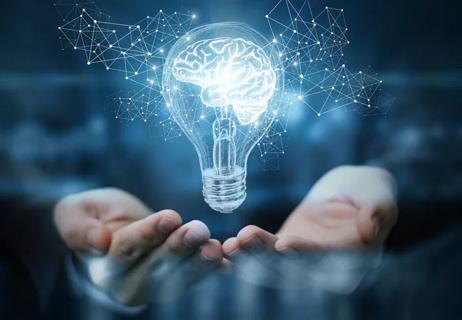
Novel collaboration is underway to foster innovation – and a real-world invention
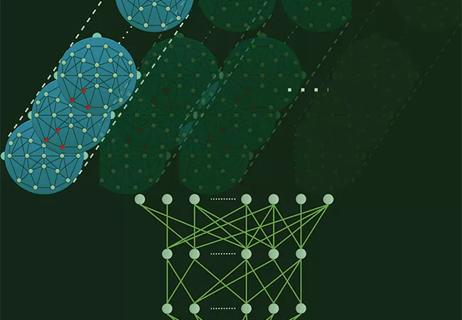
Strong performance from early models heralds eventual reshaping of care
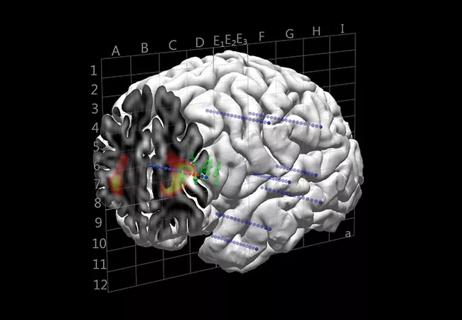
Novel approach is improving presurgical evaluation
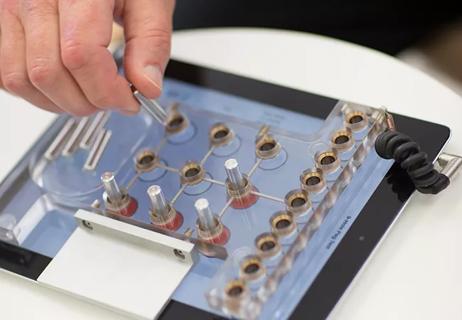
Important progress toward predictive analytics in MS and PD

A quick review of 3D-printed models, intrasaccular flow disruption and flow diverter stenting
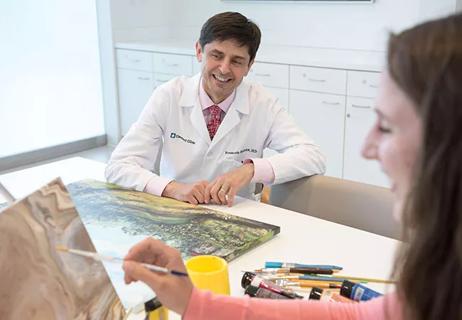
Early results with ‘HeRe We Arts’ spur testing in a randomized trial
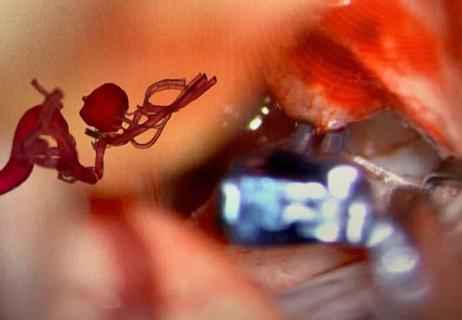
One of first reported uses of the technology for a cerebrovascular malformation